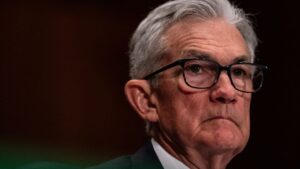The U.S. Federal Reserve is likely to start cutting interest rates by the end of the second quarter despite recent “hotter than expected” inflation data, according to Kristina Hooper, chief global market strategist at Invesco. This news was shared by Hooper and other strategists at Financial Advisor Magazine’s annual Invest in Women conference in West Palm Beach, Florida.
Inflation has declined significantly from its peak in mid-2022, but it is still well above the Fed’s 2% target level. The question now is, at what point and how quickly does the central bank start to cut rates to avoid plunging the economy into a downturn? Fed Chair Jerome Powell mentioned last week that the Fed may not be far off from throttling back.
Despite the hotter-than-expected inflation data this week, the central bank is likely to start reducing borrowing costs by the end of June, with cumulative cuts of 0.75 percentage point or 1 point in 2024, according to Hooper.
History may be a guiding principle, she said. The Fed last raised interest rates in summer 2023, and in prior interest-rate-hiking cycles, the Fed began cutting rates about 8½ months later, according to Hooper. Jenny Johnson, president and CEO of Franklin Templeton, also expects the central bank to begin cutting rates this year, in the second half of 2024 at Fed policy meetings in July or September.
Forecasts have changed from prior months. Moira McLachlan, senior investment strategist in AllianceBernstein’s wealth strategies group, mentioned that the firm had earlier expected five or six cumulative rate cuts this year, but now anticipates three or four. The firm’s “base case” is cumulative cuts of 1 percentage point in 2024, she stated.
Overall, strategists expect the U.S. to dodge a recession as it navigates interest rate policy, experiencing what’s known in economic parlance as a “soft landing.” “A soft landing is our best guess in terms of where we’re going to be,” McLachlan said. “We’re likely to avoid a recession,” Hooper echoed.
“I do worry [the Fed] may be too late to start cutting,” Hooper mentioned. The Fed has raised borrowing costs for consumers and businesses to rein in high inflation during the pandemic era, pushing up rates for mortgages, credit cards, auto loans, and other forms of lending. Stay tuned for more updates on this evolving economic landscape.
Source link

